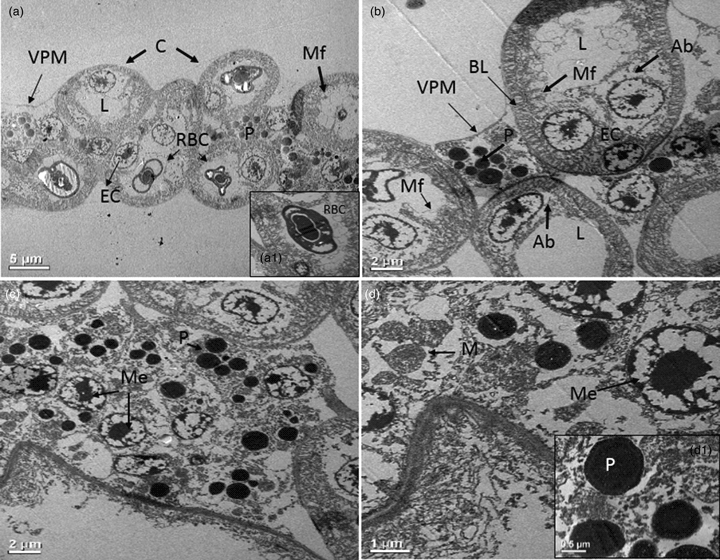No CrossRef data available.
Article contents
Morphological and Ultrastructural Studies of Pecten in the Eurasian Tree Sparrow
Published online by Cambridge University Press: 18 October 2021
Abstract

We studied the fine histological structures of pecten oculi of the Eurasian tree sparrow using various microscopy techniques. The pecten of the tree sparrow was found to be of a pleated type comprising of pleats, bridges, and base. The light microscopic study revealed further that the pleats consist of capillaries of varying sizes, blood vessels, and numerous pigmented cells that give them a black color. Histochemical studies of pecten showed a large deposition of lipid droplets, which were more abundant in the basal area. The transmission electron microscopy displayed capillaries and blood vessels that remain surrounded by a thick fibrous basal membrane. They are formed of endothelial cells having a large lumen and abluminal area with microfolds. Interstitial spaces were found filled with rounded melanocytes, electron-dense pigment granules, and mitochondria. Observations under the scanning electron microscope revealed the presence of a dense vascular network of capillaries and vessels. In addition, large hyalocytes were also observed on the surface of the pleats. The above observations suggest that the histological structure of the pecten of the tree sparrow resembles those present in the pecten of other diurnal birds. However, further investigation is required to ascertain its functional role in birds.
Keywords
- Type
- Micrographia
- Information
- Copyright
- Copyright © The Author(s), 2021. Published by Cambridge University Press on behalf of the Microscopy Society of America





